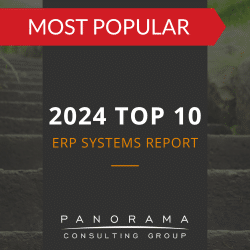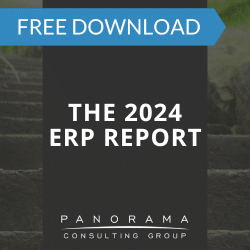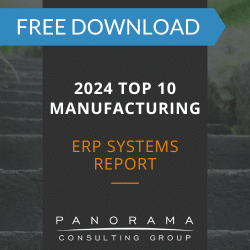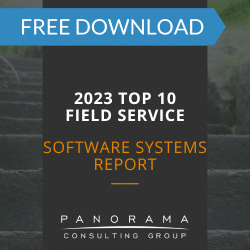The drivers of customer satisfaction you measured in the past may not be the same variables that matter today.
Why? Customer expectations have changed, and customer touchpoints span more channels than ever before.
Today, we’re discussing how to measure customer experience. What metrics should you measure? What best practices should you follow? And what tools should you use?
How to Measure Customer Experience
1. Look at Customer Loyalty and Satisfaction
Some common customer experience metrics include measurements such as customer satisfaction and net promoter score. Both of these metrics can be measured through a customer survey.
Net promoter score measures customer loyalty and likelihood to recommend. Customer satisfaction is similar to net promoter score, but it looks at how happy customers are with your products, services, and capabilities.
You can cross-reference customer satisfaction with other metrics or insights to determine the drivers of satisfaction. For example, if a customer has a high customer satisfaction score, you can investigate contributing factors, such as website user experience. This helps you prioritize various process improvements based on their level of impact.
Software Selection & Process Improvement Case Study
In helping the client get its project back on track, one of our primary focus areas was decreasing their customization needs by improving their processes to align with the system's best practices.
2. Map the Customer Journey
How will you know how to measure customer experience if you don’t know all your customer touchpoints?
This is why it’s important to map the customer journey. While doing so, you should determine key performance indicators (KPIs) for each stage of the journey and each transactional touchpoint.
These KPIs can be correlated with top-level metrics as well as operational data, such as sales figures and HR data.
When measuring KPIs, you might find pain points throughout the customer journey that present opportunities for new product or service offerings.
You also might generate ideas for process improvement and customer experience transformation. For example, you may want to improve the efficiency of rolling out new products.
3. Assign Ownership
Even organizations that have actionable customer metrics struggle to decipher them simply because they didn’t assign data ownership or process ownership.
Should the sales department be responsible for some metrics, while the marketing department is responsible for others? Which decision makers need access to ERP dashboards?
Generally, sales and marketing departments should each be accountable for tracking and communicating certain KPIs. These departments should agree on how metrics should be interpreted and acted upon.
4. Integrate Your Systems
While mapping the customer journey, you may find a lack of systems integration. If so, it’s important to either implement an all-in-one software solution or find ways to seamlessly integrate your ERP software with your eCommerce platform or CRM system.
Without one version of truth, customer metrics are difficult to decipher. For example, you won’t know if a customer is experiencing a pain point during the shipping process unless your ERP system feeds data into your CRM system.
5. Make Changes (and Manage Them)
Customer satisfaction is not just the responsibility of sales and marketing. Your entire organization should have a customer-focused mindset.
However, this doesn’t happen overnight. We recommend appointing change agents in every department, each responsible for ensuring actionable insights make their way to decision makers.
It’s also important to empower your entire workforce to act on data in real-time and make continuous improvements. Customized dashboards and strategic meetings can assist in this effort.
As your team interprets customer experience metrics, you may want to benchmark against your direct competitors as well as industry leaders. This helps you think of innovative ways to serve your customers.
Another way to innovate is to look at customer buying histories and preferences. This helps you improve targeting and personalization.
With all these innovations, a change management plan is essential. Employees need to know what’s changing, why it’s changing, and how to perform new or altered processes.
Change management also can assist in transforming the culture of your organization, making it more customer-focused.
Tools for Measuring Customer Experience
Before you measure customer experience, you need tools for collecting quantitative and qualitative data. Most organizations collect this data within their CRM systems, which integrate with their ERP systems. The ERP system provides additional insights from the business as a whole and offers advanced analytics capabilities.
Ideally, all data sources, from web analytics to customer surveys, should flow into your ERP system. This ensures a single version of truth.
If your current technology falls short when it comes to measuring customer experience, you should conduct a technology assessment to determine where you could benefit from new software.
The best technology for measuring customer experience integrates data from multiple channels and supports customizable dashboards. The technology should also include business intelligence functionality, as this will help you diagnose root causes and makes predictions.
Artificial intelligence (AI) functionality may also be beneficial for your organization. AI helps you move beyond predictive analysis into the realm of prescriptive analytics.
What other functionality should you consider? Requirements gathering workshops can help you determine this. We recommend involving your customers in requirements gathering by asking them how they’d like to interact with your company and what would make their lives easier.
Measuring Customer Experience to Transform Your Organization
For many organizations, providing an excellent customer experience is part of their competitive advantage. A positive customer experience can lead to repeat business, which is the lifeblood of most organizations.
Understanding the drivers of customer satisfaction can help you determine where to invest your time and money. Similarly, understanding pain points in the customer journey can help you determine how to improve your processes and technology.
Our ERP consultants can help you conduct a technology assessment and map your current state processes and customer journey. Contact us below for a free consultation.






![How to Measure Customer Experience [5 Tips]](https://www.panorama-consulting.com/wp-content/uploads/2018/07/how-to-measure-customer-experience.png)







